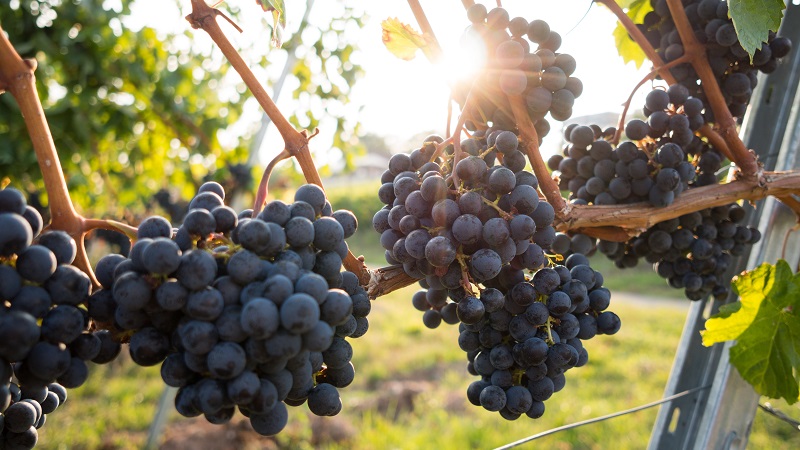How to Play and Win the Ever-Evolving Citrus Nutrition Game
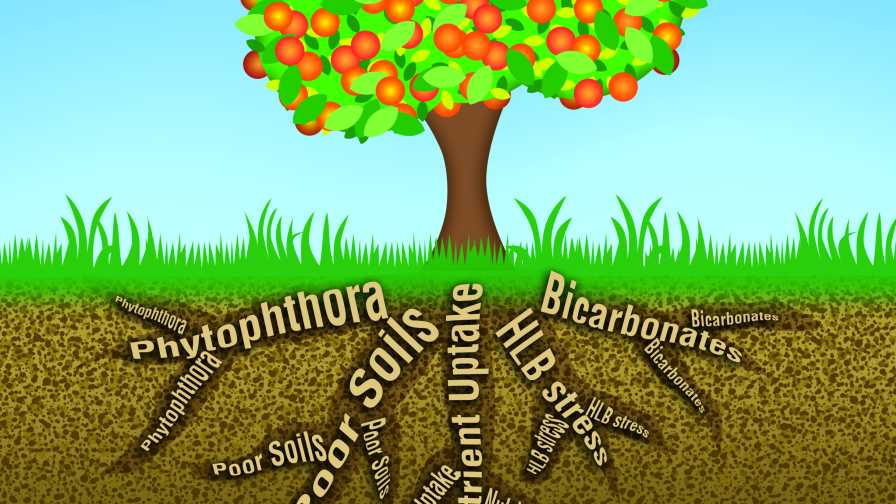
Today, growers recognize the critical importance of root health and all of the factors that can influence it.
If you were to ask 10 citrus growers what their nutrition program consists of, you probably would get 10 different answers. The microscope has been trained on citrus nutrition with increasing intensity as HLB spread across the state. Every season, growers and researchers continue to fine-tune their programs to enhance the productivity of trees afflicted with the disease.
And these efforts appear to be paying off in some groves. Early estimates put the coming season’s crop at 70 to 77 million boxes, which would mark a significant bounce back after Hurricane Irma ravaged groves last season. Many attribute the general recovery of the trees to the strong nutrition program growers have developed over the years.
“Part of the reason these trees have bounced back is the nutrition programs growers are putting in place, along with the good rains we’ve had,” says Kelly Morgan, Director of UF/IFAS Southwest Florida Research and Education Center. “The growers have learned through trial and error and have taken the research we have done and applied it in their groves. They are applying proper nutrition better than ever before.”
Opting for Optimum
Morgan has been on the front lines of citrus nutrition research for years, but that work took on enhanced importance when HLB entered the scene. He partnered with Bob Rouse, a UF/IFAS Associate Professor (retired) of Horticultural Sciences, in an HLB-related research project to determine proper application of foliar nutrition. The five-year study began in 2010 in response to the strong uptick in foliar nutrition products being applied to HLB-infected groves.
“At the time we started the study, I believed that growers were applying way too much foliar nutrition to the trees,” Morgan says. “Growers since have backed off the amount they apply, partly in response to the results of this study.”
In the study, Morgan and Rouse observed that the UF/IFAS recommended rate of nutrients like magnesium, zinc, boron, and iron applied three times per year, rather than one time, performed best of the various rates trialed.
“It was basically three times the UF/IFAS recommended rate, but it was spread out over the year,” he says. “This resulted in tissue samples showing the nutrition levels in the leaves at near or slightly above the optimum range.”
In subsequent surveys with growers, they confirmed groves were doing the best where growers kept minor nutrients in this near or slightly above optimum range.
“We have learned if you go too far above optimum, the trees will look great, grow a lot leaves, and look denser but will not produce much fruit,” Morgan adds. “If you go too low below optimum, the trees can’t recover. It is not necessarily about the rates applied. It is more about collecting timely soil and leaf samples and ensuring you keep your nutrition near or slightly above the optimum level for needed nutrients.”
Because of what they have learned through the research project and other studies, Morgan says UF/IFAS currently is revising its “Nutrition of Florida Citrus Trees” document to focus more on the concentration of nutrients and micronutrients based on sampling. They hope to publish it in early 2019.
“The key to living with HLB is that you have to pay much closer attention to what the trees are telling you in the form soil and tissue samples,” Morgan says. “Before we could get away with being close on our nutrition requirements, but today we must be precise.”
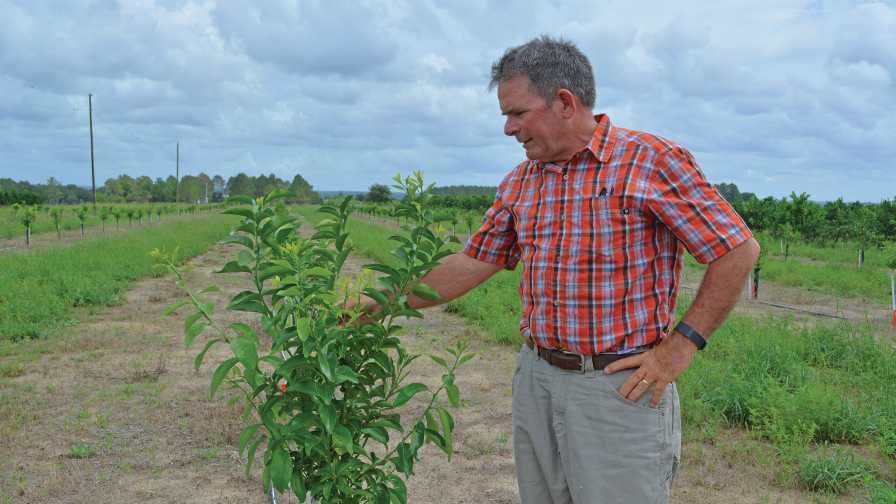
Chuck Allison says a multi-tiered approach to his citrus nutrition program has paid off with productive trees since his groves were planted seven years ago.
Photo by Frank Giles
Ground-Up Approach
In the early days, some believed foliar nutrition could supplement nutrition in HLB-infected trees. While foliar nutrition remains very important, most growers agree minor nutrients need to be applied to the soil as well to feed the trees’ roots.
“It really needs to be a concerted effort that addresses the whole tree,” Morgan says. “The other thing we have learned is we must apply this fertilizer in very small doses, more frequently. The controlled-release fertilizers or the sulfur-coated fertilizers that adjust the soil pH are good options. If you can fertigate, that is probably the best way to go, but perhaps only 50% or less of growers have that ability.”
A focus on root and foliar health, along with psyllid control, has paid off for Chuck Allison, who has groves near Umatilla.
“Our nutrition program continues to evolve,” Allison says. “Besides slow-release fertilizer and frequent liquid applications, we add a lot of nutritional products to both our foliage sprays and herbicide applications. We recently increased our emphasis on micronutrients and believe strongly in soil amendments to enhance microbial activity in the soil [to enhance nutrient uptake].”
Morgan says a lot more is now known about the impact of soil pH on nutrient uptake in the soil. The reliance on deep-water wells used for irrigation that have high levels of calcium and bicarbonate has increased the pH in these irrigated soils. Treating the soil and irrigation water is now an important facet of nutrition programs.
“High soil pH reduces the nutrient uptake, so reducing the soil pH below 7 down to 6 to 6.5 can increase the uptake,” he says.
Lee Jones, Gardinier Florida Citrus, says the evolution of his nutrition program reflects how he and other growers have tweaked their programs over the years.
“We actually changed our nutrition program starting after the last set of hurricanes in 2005 [before greening was endemic],” Jones says. “We had started a liquid nutrition program with a heavy nitrate base and weekly injections (3 gallons per acre per week) from February through June. Then more liquid from September through November. Our dry applications were in March, June, August, and October.”
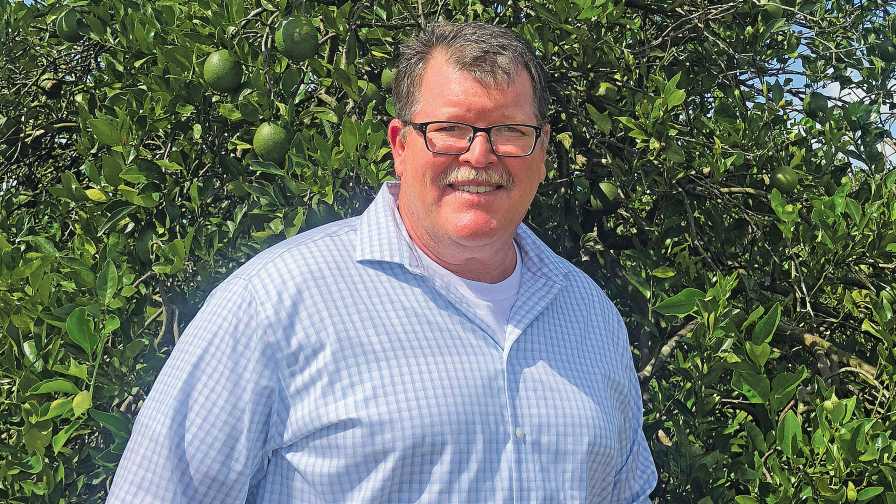
Lee Jones of Gardinier Florida Citrus has added more minor nutrients to his fertilizer program in recent years and is adding compost to encourage beneficial microbe populations.
Jones says he has continued to tweak their program, applying more minor nutrients the past couple of years.
“I don’t believe there is any one program that works across the board,” he says. “I’ve found it important to give the tree what it needs, when it needs it — more of a spoon-feeding philosophy. Root health is important. Where we have applied compost, I believe we have had more luck with sustaining the good-guy [microbe] populations. Perhaps the compost gives us a better base to sustain microbial populations. Finally, we lean more toward nitrate-based fertilizers. These are more available to the roots. We put out as much as the budget will stand.”
Bactericide Debate Continues
Growers are still trying to determine what effect bactericides are having on tree health after three years of application. The debate got a little more contentious with a recent interview regarding Citrus Research and Development Foundation (CRDF)-conducted field trials that test product yield impact. The results of those trials show no conclusive evidence the antibiotics are having an impact.
AgroSource Inc., the manufacturer of two of the products labeled for use as a bactericide, took issue with the results, questioning if the proper adjuvants were used in the CRDF trials. Florida Grower magazine asked CRDF representatives about their response to the questions posed by AgroSource. As of this posting, CRDF noted they were still analyzing trial data and would reply at a later date. Stay tuned for more on this developing story.
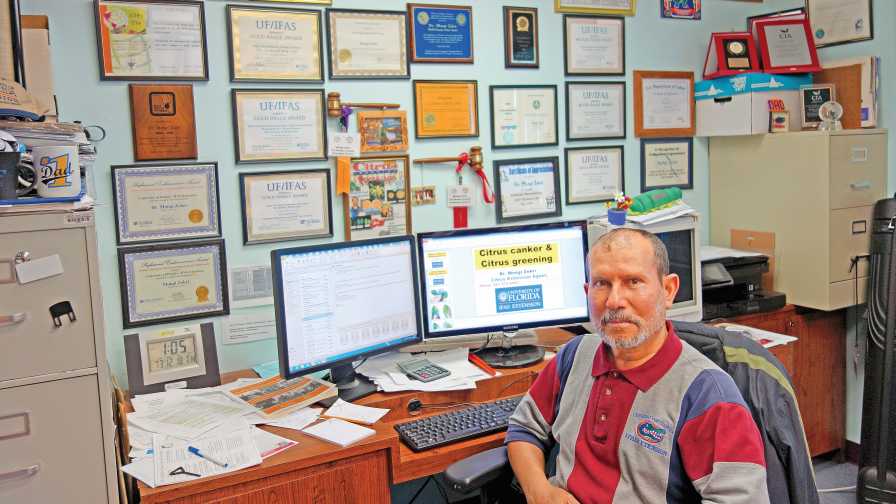
UF/IFAS Citrus Extension Agent Mongi Zekri
The Critical Role of Citrus Tree Nutrition
For years as a Citrus Extension Agent, Mongi Zekri has lended his expertise to growers on various production practices. In 2016, he authored the book “The Critical Role of Citrus Tree Nutrition,” which lays out the fundamentals of fertilization. We asked Zekri for a few insights on this important production practice and what growers can learn from his book.
Is it important to understand nutritional requirements of citrus trees under Florida conditions?
Zekri: Nutrients are required in different amounts. Some fertilizers are more efficient through soil applications. Others are more efficient through foliar sprays. Efficiently producing maximum yields of high-quality fruit is difficult without an understanding of soil characteristics and nutritional requirements of citrus trees. Most Florida citrus trees are grown in soils inherently low in fertility with low cation exchange capacity and low water-holding capacity. These soils are unable to retain sufficient quantities of available plant nutrients.
How can growers successfully adjust and refine an efficient fertilizer program?
Zekri: Nutrient requirements should vary as the crop load changes. Adjust nutritional programs when severe leaf losses occur due to severe pruning or major weather events such as a freeze, flooding, or hurricane. Reduce fertilizer rates and increase application frequency. Quantifying nutrients in soils and trees through soil and tissue analyses eliminates guesswork when adjusting a fertilizer program.
What are the advantages/benefits of foliar nutrition and fertigation?
Zekri: Foliar nutrition is becoming very common and used extensively in citrus production, especially during this HLB era. Environmental considerations also require the use of more efficient methods for nutrient applications. Foliar application of most nutrients is highly efficient because the materials are targeted to areas where they can be directly absorbed into the plant. Fertigation also has been a very efficient way to apply soluble fertilizers to citrus trees. Through fertigation, fertilizer is placed in the wetted area where feeder roots are extensive. With properly managed fertigation, better yield and fruit quality were produced with less fertilizer.







